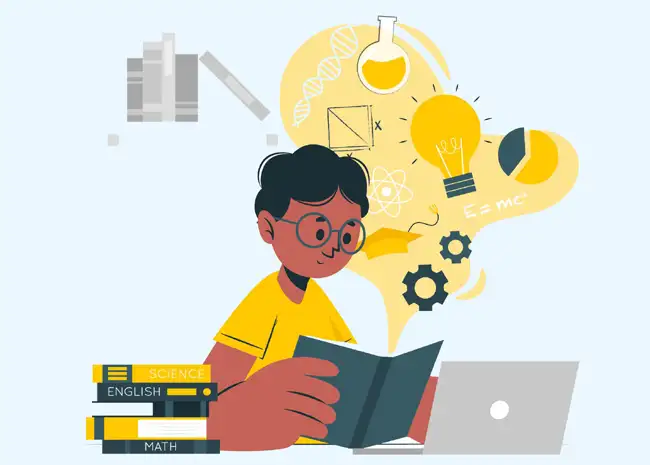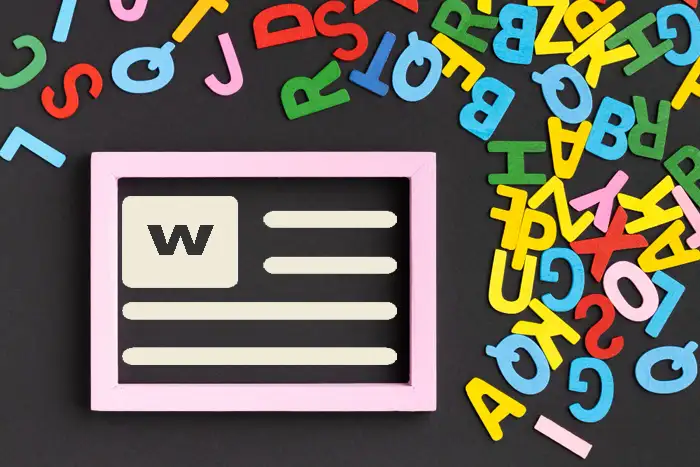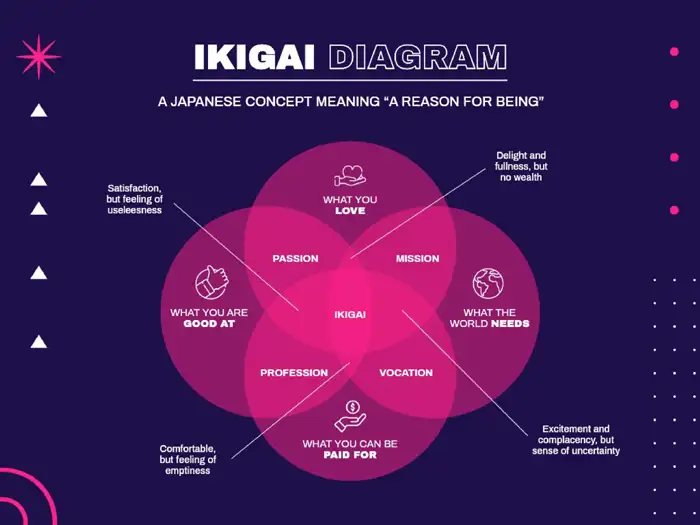Declarative vs procedural knowledge written by Dr. Mohammad Hossein Hariri Asl with a video or podcast in the category of TESOL or TESL issues
Author: Dr. Mohammad Hossein Hariri Asl
Video of declarative vs procedural knowledge
Background
Following a brief history of the emergence of the declarative / procedural distinction in the study of second languages, a number of constructs are elucidated (Paradis, 2009). The crucial distinction between lexicon and vocabulary; what it means to rely more or less on declarative memory; the nature of the continuum from controlled to automatic processing; the nature of the differing structures of metalinguistic knowledge and implicit linguistic competence; various indicators of metalinguistic explicitness in second language performance; and the macro- and micro-anatomical levels of cerebral representation.
Declarative knowledge
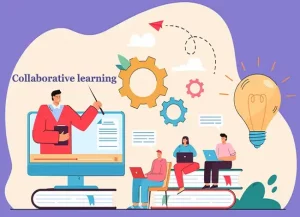
Internalized rules and memorized chunks of the language constitute the ‘what’ of the learner’s system or declarative knowledge (McLaughlin, 1987).
N. Ellis (1994, as cited in Elder, Ellis, Erlam, Loewen, Philp, & Reinders, 2009) suggests that “declarative rules can have top-down influences on perception, in particular by making relevant features salient, thus enabling learners to notice them and to notice the gap between the input and their existing linguistic competence” (p. 16). Such a position suggests that implicit and explicit learning processes work together in L2 acquisition and that they are dynamic, taking place consciously but transiently with enduring effects on implicit knowledge.
Procedural knowledge

Procedural knowledge consists of knowing ‘how’ to employ strategies and procedures to process second language data for acquisition and use. Procedural knowledge accounts for how learners accumulate and automatize rules and how they restructure their internal representations to match the target language (McLaughlin, 1987). According to Barkhuizen and Ellis (2005), “What counts in the study of interlanguage development is learners’ procedural knowledge; and this can only be investigated by means of naturally occurring data” (p. 48).
Anderson’s ACT Model
Anderson’s (1976, as cited in Ellis, 2008) Adaptive Control of Thought Model rests on the distinction between declarative and procedural knowledge. He characterized the essential differences in the form of three assumptions:
- Declarative knowledge seems to be possessed in an all-or-none manner, whereas procedural knowledge seems to be something that can be partially possessed.
- One acquires declarative knowledge suddenly by being told, whereas one acquires procedural knowledge gradually by performing the skill.
- One can communicate one’s declarative knowledge verbally, but not one’s procedural knowledge (Anderson, 1976, p. 117, as cited in Ellis, 2008)
The transition of declarative to procedural knowledge takes place in three stages (Ellis, 2008):
- In the declarative stage, information is stored as facts for which there is no ready-made activation procedure.
- In the associative stage, because it is difficult to use declarative knowledge, the learner tries to sort the information into more efficient production sets by means of ‘composition’ (collapsing several discrete productions into one), and ‘proceduralization’ (applying a general rule to a particular instance). Anderson (1983, as cited in Ellis, 2008) notes that errors are particularly likely during the associative stage.
- In the autonomous stage, in which procedures become increasingly automated, the mind continues both to generalize productions and also to discriminate more narrowly the occasions when specific productions can be used.
Ellis (1985, as cited in McLaughlin, 1987) categorized the processes involved in using second language knowledge into learning, production, and communication strategies. Learning strategies relate to the acquisition of procedural knowledge rather than its use; production and communication strategies refer to language use. Production strategies refer to those strategies used by learners to realize communicative goals.
According to Schmitt (2002), some information processing theories suggest that language, like other skilled activity, is first acquired through intentional learning of what is called ‘declarative knowledge’ and that, through practice, the declarative knowledge can become ‘procedural knowledge’.
As Ellis (2008) has said, procedural knowledge is uni-directional; that is, automatization of one skill, such as listening, does not directly assist automatization of a different skill, such as speaking. However, automatization of one skill may have an indirect effect on a different skill by improving and strengthening declarative knowledge which is bi-directional, that is, it can be utilized in the development of different skills. According to McLaughlin (1990):
It is argued that practice can lead to improvement in performance as sub-skills become automated, but it is also possible for increased practice to create conditions for restructuring with attendant decrements in performance as learners recognize their internal representational framework (p. 113).
Explicit L2 learning
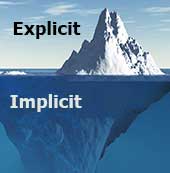
Explicit language learning is necessarily a conscious process and is generally intentional as well (Elder et al., 2009).
Explicit knowledge, in particular lexical knowledge (i.e., knowledge of form-meaning connections), may be less susceptible to the influence of frequency than is implicit knowledge. Although vocabulary learning normally requires frequent exposure to the words to be learned, it sometimes happens that a single encounter suffices for a new word (form-meaning connection) to be remembered forever and, on the other hand, that many exposures sometimes do not result in acquisition. Thus, frequency may have a differential impact depending on the type of knowledge concerned (Hulstijn, 2002).
Implicit L2 learning
Implicit language learning takes place without either intentionality or awareness (Elder et al., 2009). However, there is controversy as to whether any learning is possible without some degree of awareness. To be more precise, it is frequently claimed that learning without awareness is impossible (Brewer, 1974; Dawson & Schell, 1987; Lewis & Anderson, 1985, as cited in Schmidt, 1990).
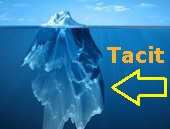
According to DeKeyser (2003, as cited in Doughty & Long, 2003), it is important to distinguish implicit learning from two concepts it is often confused with in the second language literature: inductive learning and implicit memory. Inductive learning (going from the particular to the general, from examples to rules) and implicit learning (learning without awareness) are two orthogonal concepts. When students are encouraged to find rules for themselves by studying examples in a text, learning is inductive and explicit. When children acquire linguist competence of their native language without thinking about its structure, their learning is inductive and implicit.
Skill-acquisition Theories
Skill-acquisition theories of language acquisition draw on the distinction between declarative and procedural knowledge (Anderson, 1983, as cited in Ellis, 2008). Anderson (1993, as cited in Cook, 2008) has proposed a ‘cognitive behaviorist’ model called ACTR, which sees learning as building up response strengths through a twofold division into declarative memory (individual pieces of information) and procedural memory (procedures for doing things). As declarative facts get better known, they are gradually incorporated into procedures, and several procedures are combined into one, thus cutting down on the amount of memory involved.
Practice
According to DeKeyser and Sokalski (1996), there are two different views about the concept of practice. On the one hand, if adult SLA is an explicit learning process, then one would expect to find the same patterns of learning as for other cognitive skills. They (1996) continue, “knowledge acquired in declarative (explicit) form is then transformed and automatized through analogical reasoning and specific kinds of practice” (p. 614).
On the other hand, if SLA in adults draws on a specific module of the mind, or on more general implicit learning mechanisms, then neither explicit learning nor practice in production play an important role, that is, acquisition is the implicit process of generating linguistic competence from input and the capacity to produce results from this acquired competence (Krashen, 1982, 1985, 1994, as cited in DeKeyser & Sokalski, 1996). According to Ellis (1988), “… the whole concept of controlled practice in language teaching should be reconsidered” (p. 1).

The essence of the controlled practice stage (corresponding to the associative/procedural stage in skill learning theory is to facilitate a shift in the language learners from relying on declarative rules to procedural knowledge by developing efficient procedures of performing the skill (Dörnyei, 2009).
As DeKeyser (1997) has said, “Initial practice of a task has very different effects (proceduralization compared to subsequent practice (automatization) of declarative knowledge” (p. 211). In this response, Lightbown (1985, as cited in Ellis, 2008) maintains, “Practice does not make perfect”.
To change behavior (i.e. develop automatic processes) it is necessary to provide practice of the actual behavior itself. In the case of language learning, ‘behavior’ must entail attempts to communicate. In this regard, communicative practice serves as a device for proceduralizing knowledge of linguistic structures that have been first presented declaratively. Instruction that incorporates such practice can be seen as an attempt to intervene directly in the process by which declarative knowledge is proceduralized (DeKeyser, 1998, as cited in Ellis, 2008).
Automatic processing contrasts with controlled processing (Shriffin & Schneider, 1977, as cited in Ellis, 2003), where activation of nodes involves attentional control. A key difference between automatic and controlled processing is that whereas the former occurs rapidly and in parallel form, the latter occurs more slowly and functions serially.
According to McLaughlin and Heredia (1996, as cited in Ellis, 2003):
… automatic processing involves the activation of certain nodes in memory each time the appropriate inputs are present. This activation is a learned response that has been built up through consistent mapping of the same input to the same pattern of activation over many trials (p. 214).
In terms of self-correction and monitor, Krashen (1994) maintains that the conditions for Monitor use are not fully satisfied when explicit knowledge is used, and there is not enough acquired competence for extensive implicit correction.
Johnson (1988, 1996, as cited in Ellis, 2008) drew on skill-learning theory to justify practice from another perspective. He emphasized the importance of feedback in the learning process, suggesting that the instructional sequence is best seen as one of ‘learn => perform => learn’ rather than the traditional sequence of ‘learn => perform’. During or perhaps after the ‘perform’ stage, learners must have the opportunity to receive feedback.

Ur (1996, as cited in Ellis, 2008) proposed a sequence of practice activities designed to lead a learner from ‘accuracy’ (i.e. performance based on declarative knowledge) to ‘fluency’ (i.e. performance based on procedural knowledge). This sequence involves ‘controlled drills’, ‘meaningful drills’, ‘guided meaningful practice’, ‘structure-based free sentence composition’, ‘structure-based discourse composition’ and ‘free discourse’.
Conclusion
Skill-acquisition theories are problematic in two related respects (Ellis, 2008). First, as Mitchell and Myles (2004) commented, “The route followed by L2 learners is not convincingly explained by such approaches” (p. 128). Second, it is difficult to accept that the acquisition of all L2 features begins with declarative knowledge.
There are two positions in terms of the kind of interface between declarative and procedural knowledge. According to the strong interface position, declarative memory can convert into procedural memory. Yet, according to the weak interface position, declarative memory can help adjust the neural circuits in which procedural memory is housed (Elder, et al., 2009). Paradis (2004, as cited in Elder, et al., 2009) is adamant that explicit knowledge does not convert into implicit knowledge; acquisition may commence with an explicit rule (controlled processing) but subsequently, the learner acquires implicit computational procedures involving automatic processing. He proposed that metalinguistic knowledge can assist the development of implicit competence, but only indirectly through focusing attention on the items that need to be practiced and through monitoring.
According to Eysenck (2001, as cited in Ellis, 2006), recent changes in the definition of both pairs of terms have brought them closer together, making it “increasingly difficult to decide on the extent to which different theories actually make significantly different predictions” (p. 213).
In the case of SLA, “the amount of L2 research narrowly focused on the implicit-explicit distinction is quite limited, not only in the number of studies, but also in duration and in scope of the learning target” (DeKeyser, 2003, p. 336, as cited in Elder et al., 2009).
References
- Barkhuizen, G., & Ellis, R. (2005). Analysing learner language. Oxford: Oxford University Press.
- Cook, V. (2008). Second language learning and second language teaching. London: Hodder Education, Inc.
- DeKeyser, R. (2003). Implicit and explicit learning. In C. J. Doughty & M. H. Long (Eds.). Handbook of second language acquisition (pp. 313-349). Malden, MA: Blackwell.
- DeKeyser, R. M. (1997). Beyond explicit rule learning: Automatizing second language morphosyntax. SSLA, 19, 195-221.
- DeKeyser, R. M., & Sokalski, K. J. (1996). The differential role of comprehension and production practice. Language Learning, 46(4), 613-642. doi:10.1111/j.1467-1770.2001.tb00015.x
- Dörnyei, Z. (2009). The psychology of second language acquisition. Oxford: Oxford University Press.
- Ellis, R. (1988). Investigating language teaching: The case for an educational approach. System, 16(1), 1-11. doi:10.1016/0346-251X(88)90004-8
- Ellis, R. (2003). Task-based language learning and teaching. Oxford: Oxford University Press.
- Ellis, R. (2006). Implicit and explicit corrective feedback and the acquisition of L2 grammar. SSLA, 28, 339-368. doi:10.1017/S0272263106060141
- Ellis, R. (2008). The study of second language acquisition. Oxford: Oxford University Press.
- Hulstijn, J. H. (2002).What does the impact of frequency tell us about the language acquisition device? SSLA, 24, 269-273. doi:10.1017/S0272263102002115
- Krashen, S. D. (1994). Self-correction and the monitor: Percent of errors corrected of those attempted vs. percent corrected of all errors made. System, 22(1), 59-62. doi:10.1016/0346-251X(94)90040-X
- McLaughlin, B. (1987). Theories of second-language learning. New York, NY: Routledge, Chapman, and Hall, Inc.
- McLaughlin, B. (1990). Restructuring. Applied Linguistics, 11(2). doi:10.1093/applin/11.2.113
- Mitchell, R., & Myles, F. (2004). Second language learning theories. London: Hodder Arnold.
- Paradis, M. (2009). Declarative and procedural determinants of second languages. Amsterdam: John Benjamins Publishing Company.
- Robinson, P. (1997). Individual differences and the fundamental similarity of implicit and explicit adult second language learning. Language Learning, 47(1). doi:10.1111/0023-8333.21997002
- Schmidt, R. W. (1990). The role of consciousness in second language learning. Applied Linguistics, 11(2). doi:10.1093/applin/11.2.129
- Schmitt, N. (2002). An introduction to applied linguistics. London:Hodder Headline Group by Arnold.
How to cite this article in APA style?
Hariri Asl, M. H. (2023). Declarative vs procedural knowledge in language learning. LELB Society, https://lelb.net/declarative-vs-procedural-knowledge/
